
Blennies are a classic sight in a marine fish tank. They have added interest to the lower levels or aquariums for a long time.
One of the most popular species is the Lawnmower Blenny; its name might give away why. They are good at grazing algae, helping you to keep levels low.
There are lots of other reasons to get these fish though. They have a very interesting design and they have plenty of personalities.
We will talk you through everything you might need to know when caring for Lawnmower Blennies. You’ll go from beginner to expert in no time.
TABLE OF CONTENTS
Lawnmower Blenny Facts & Overview

| Category | Rating |
| Care Level: | Intermediate |
| Temperament: | Aggressive with own species |
| Color Form: | Brown, cream, and/or green |
| Lifespan: | Up to 4 years |
| Size: | 4-6 inches |
| Diet: | Herbivore |
| Family: | Blenniidae |
| Minimum Tank Size: | 40 gallons |
| Tank Set-Up: | Marine setups with rocks and algal growth |
| Compatibility: | Peaceful community |
The Lawnmower Blenny is a popular marine fish that is very interesting to watch and helps to keep your tank clean. This is because it likes to graze on hair algae, as its name might suggest.
The species can be found under many names, such as the Jeweled Blenny, Sailfin Blenny, Algae Blenny, and Jeweled Rock Skipper.
Their scientific name is Salarias fasciatus, one of 13 species in the genus. They are part of the Blenniidae family, which includes all of the Combtooth Blennies.
They are native to the Indian Ocean off the East African coast. They can also be found in the Red Sea, Samoa, and the Great Barrier Reef.
They favor shallow reef flats with a developed algal cover.
Caring for Lawnmower Blennies at home isn’t too difficult. They are hardy fish that can be housed with other species; compatibility problems are rare.
Lawnmower Blennies are one of the most popular types of Blenny so it shouldn’t be too difficult to find a stock near to you, try searching online.
The larger the individual, the more they cost. Prices can vary from $20 to $40 based on size and the area you live in.
Whenever you buy livestock, lookout for signs of disease. Never buy anything from a pet store selling diseased fish.
A healthy fish could live up to 4 years, or even longer in a healthy environment.
Typical Behavior
This species spends its life at the bottom of the tank, sitting on the substrate or the various decorations around them.
They can be quite stubborn. It can be difficult to remove them from a rock if you’re trying to move them. A fish trap might help with this.
They can sit very still, but they’ll hop between rocks now and then to find food.
Their feeding habits help to keep the aquarium clean. They’re natural grazers that will clean up hair algae as and when they come across it while they move around.
This can be very useful, since an outbreak of hair algae can ruin the conditions in your tank, not to mention that it will look unsightly. It grows as short green filaments on all surfaces, including plants.
Lawnmower Blennies pay attention to things outside of the aquarium. They have large round eyes that will follow you as you pass the tank.
This helps to display their curious personality. You can quickly become attached to these fish.
Aggression isn’t usually a problem, especially if you’ve planned around it. Sometimes they can nip at tank mates that get too close to their territory. Occasionally they will nip at polyps too.
They tend to get more aggressive as they age. They are also much more aggressive towards their own kind and other closely related species.
Some individuals are just innately aggressive, but this is a minority.
Another consideration is the size of tank mates; they shouldn’t be large enough to eat your blenny. This is a particular risk when they’re young.
Appearance
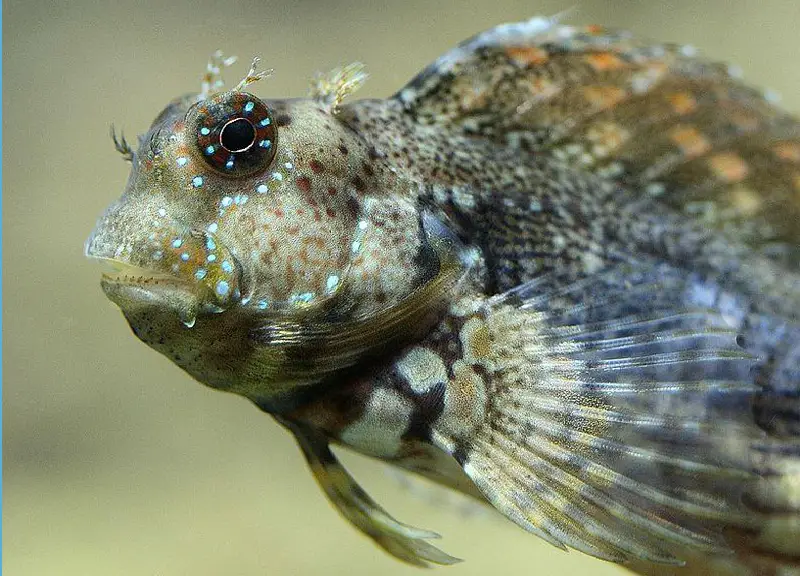
Lawnmower Blennies make a cute addition to a marine setup. They have a distinctive design that adds plenty of interest to the bottom of the aquarium.
Their head is blunt, with two large orbital eyes on top. These eyes are one of their most prominent features. They face outwards and can move independently, giving these fish a large field of vision.
You will notice the eyes follow you around the room. They’ll even stop what they are doing to watch you.
Their black pupils have white stripes extending from them. A series of blue dots surround each eye as a whole.
They have flexible jaws and comb-like teeth which help them to scrape food from hard surfaces, such as dead coral and algae.
A Lawnmower Blenny can reach 4-6 inches when fully grown. A six-inch fish is larger than most people expect, so make sure you have space in your tank to cater to an individual of this size.
The body doesn’t boast many colors, but it does have an interesting design. Along the body is usually a striped/banded pattern of brown, cream, and green.
On their back is a single dorsal fin with the same design that stretches the entire length of the body.
This appearance enables them to blend in against rocks and corals. They can be easy to miss if you’re not looking properly.
Lawnmower Blennies are very difficult to sex. Most aquarists keep these fish singly, so it isn’t usually a problem.
Sometimes you can spot a male due to elongated anterior rays on their anal fin.
Habitat and Tank Conditions
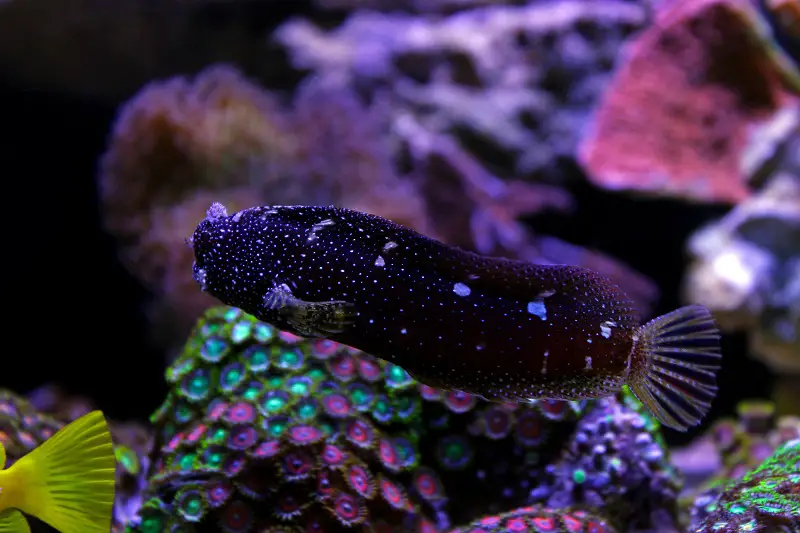
Always consider the natural habitat of a species when trying to design an aquarium for them. These natural conditions are what a fish will need in captivity too.
Though these fish are native to the east coast of Africa, in the Indian Ocean, populations have spread to the Red Sea, Samoa, and the Great Barrier Reef.
These tropical areas offer coastal shallow fringing reefs or patch reefs in lagoons. Lawnmower Blennies live with sponges, stony corals, coral rubble, and macroalgae for shelter and a good supply of food.
Most blennies live a solitary life without many other creatures around them.
Much of their time is spent at the substrate where they search for detritus that has fallen from above. Other times they will sit very still on the reef.
The warm water would be alkaline with moderate amounts of light.
Recreating these natural conditions is the key to maintaining a happy and healthy fish. Below we outline how you can design the perfect aquarium for blennies.
Tank Conditions
You need a substrate layering the floor of the tank. Sand is a safe option because the grains are fine. This means the substrate is soft and unlikely to scratch bottom-dwelling fish.
Coral sand is a good way to recreate a reef environment.
Create a rocky environment by spreading live rocks around the tank. Position them in a way that produces lots of nooks and crannies from a blenny to hide in.
Many people like to add wacky decorations to their tank, but a natural aesthetic is the best way to make these fish feel at home.
Live plants are another way to make a more natural habitat. The shelter these provide helps to relieve stress, and they’ll help to clean the water.
When arranging the aquarium, leave some open swimming spaces too.
Lawnmower Blennies prefer a temperature between 72°F and 78°F. The pH should be 8.1-8.4 and you need a salinity of 1.020-1.025.
Moderate-high water movement is ideal, so if your filter outlet is weak, try investing in an air/water pump.
Standard aquarium lighting is fine, avoid bright lights.
What Size Aquarium do they need?
Lawnmower Blennies can reach a decent size, so they need plenty of space to grow into. They won’t stay at the size you bought them at forever, so plan ahead.
A 40-gallon tank is a minimum size for a single fish, but they’ll appreciate a bigger tank if you can manage it.
A larger aquarium will have a greater surface area for algae growth too, which is an important dietary component.
How Many Can be kept per gallon?
Most people keep these fish singly because they can show aggression to their own kind and closely related species.
Adding a second requires a much bigger tank because they will each need a large territory. An extra 30 gallons of water for each additional blenny should be provided.
The more space you can give them, the less likely aggressive outbursts will be.
Tank Mates
These are relatively peaceful and friendly fish, especially when kept with other species. They fit well into a community marine setup.
If stressed, a Lawnmower Blenny might become aggressive to a tank mate, usually by nipping them. This is rare and shouldn’t cause a serious injury.
If they do nip a tank mate, you will spot a mark or ripped fin on the victim’s body. You don’t need to worry about them eating a small tank mate because they have no interest in meaty foods.
Most peaceful reef species are good tank mates. Lagoon species like pipefish might struggle, Lawnmower Blennies might want to eat the algal films on their scales.
Avoid large species that might want to eat smaller fish, like Lionfish or Triggerfish.
Lawnmower Blennies are generally considered not to be reef safe. They will regularly nip at coral polyps which can result in a lot of damage.
Other invertebrates should be safe. Shrimps and snails will be ignored by your blennies so they can be kept together without issue.
Can You Keep Lawnmower Blennies Together?
The easiest way to care for Lawnmower Blennies is to keep them singly. This is how they are most commonly kept and is advisable if you’ve never kept a blenny before.
They often display aggression when kept with their own kind or closely related species (such as other blennies). Occasionally this will result in injury.
They use aggression to protect their territory and source of food, so if you want multiple blennies, ensure you have a large tank for each of them to their own territory.
Some people choose to buy a mating pair for breeding.
Diet
Feeding is the main pastime of these fish, they do it almost constantly.
Their feeding habits are one of the main reasons to keep a Lawnmower Blenny. They eat hair algae growing around the tank, which can save you time when cleaning.
One way they feed is by hitting the substrate with their jaw. This has the benefit of stirring up detritus from the substrate, so it can be collected by the filter inlet.
In the wild, they would naturally eat algae, but it would only make up part of their diet. They’d also eat detritus, diatoms, fish eggs, and whatever else they could scrape off hard surfaces.
In captivity, algae are the main source of food. You should only add Lawnmower Blennies to established aquariums that have already developed algal films.
You can add store-bought algae wafers/pellets if algae growth is low in your tank. Any uneaten food should be removed before it can decay.
You can even use green vegetables. Try cutting up small pieces of lettuce, zucchini, cucumber.
Give them your intended diet while they are young, they often refuse to try new foods when they’re older. If they do refuse to eat new foods, you’ll have to sustain them on just algae.
If your tank contains lots of algae, you can feed these fish a few times a week. They constantly scrape hard surfaces for food, so feed them more frequently if algae run low.
Keep an eye on the bellies of your Lawnmower Blennies. If they are looking smaller and tighter then you may need to give them extra food or move them to a tank with a greater supply of algae.
Care
Keeping these fish can be easy, but a few issues can arise, like aggression or refusal to eat. This is difficult to predict because each individual behaves differently.
Beginners will be able to care for Lawnmower Blennies, but they must be confident that they know how to handle these problems should they arise.
Keeping the aquarium clean is crucial for keeping fish healthy. Poor conditions will make your fish ill and allow diseases to flourish.
Perform partial water changes regularly to prevent the buildup of pollutants. By using a water testing kit weekly, you can check those water parameters are at the levels they should be, and act quickly if they’re not.
If algae start to bloom and get out of control, then wipe it away. Don’t remove all of it though or these fish might struggle to find food.
Algae is an important component to a Lawnmower Blenny’s diet, so only add them to established tanks where algae and microbial films have had a chance to develop.
The species is a hardy one. They can tolerate small changes in their environment if something goes wrong, and they are good at fending off disease.
This doesn’t mean that they’ll never get ill though; the disease can affect any fish.
If you notice signs of disease, isolate it from the rest of your fish (to prevent the disease from spreading) and treat it separately.
One of the most common diseases is Marine Ich (or White Spot Disease). It gets its name from the freshwater parasite Ichthyophthirius multifiliis, but the marine version is caused by Cryptocaryon irritans.
You will be able to spot this disease as it causes white spots to appear across a fish’s body. It can also cause respiratory problems, fatigue, and a loss of appetite.
There are many treatments available from pet stores for most common diseases like Marine Ich.
Pathogens thrive in poor water conditions, so keeping your tank clean is the best way to keep diseases at bay.
Breeding
One of the biggest challenges you will face is ensuring that you actually have a mating pair for breeding; males and females are very difficult to tell apart.
Some people claim that males are slightly bigger. Males also supposedly have elongated anterior rays on their anal fin.
Even once you have a male and a female, there is no guarantee that they’ll mate. Some individuals are very picky about their mating partner.
There aren’t many reports of these fish mating at home so you might struggle, but some people like to try. Share your story if you manage it!
Maintaining a healthy environment is imperative to getting fish ready to mate. If breeding them is your aim, clean the tank more frequently than you normally would, and monitor the water conditions closely.
A healthy diet is crucial too, providing the energy needed for mating.
Lawnmower Blennies spawn seasonally between April and June. The rising spring temperature is one trigger for them to mate.
Gradually raise the temperature of your tank to 78°F. This will hopefully stimulate the changing seasons.
If a pair successfully mates, the female will begin to lay fertilized eggs. These are covered in a sticky substance so she can attach them to surfaces. In the wild, she often lays them in empty shells.
Once the eggs have been laid, it is the male’s job to guard them against over-interested fish until they hatch.
The parents should not eat the eggs or the resultant fry, but be cautious about any tank mates, especially once the father’s protection ends.
It is safest to use a dedicated breeding tank without any tank mates looking for a snack. This may not be worth the effort though, since getting them to breed is so difficult.
Are Lawnmower Blennies Suitable for Your Aquarium?
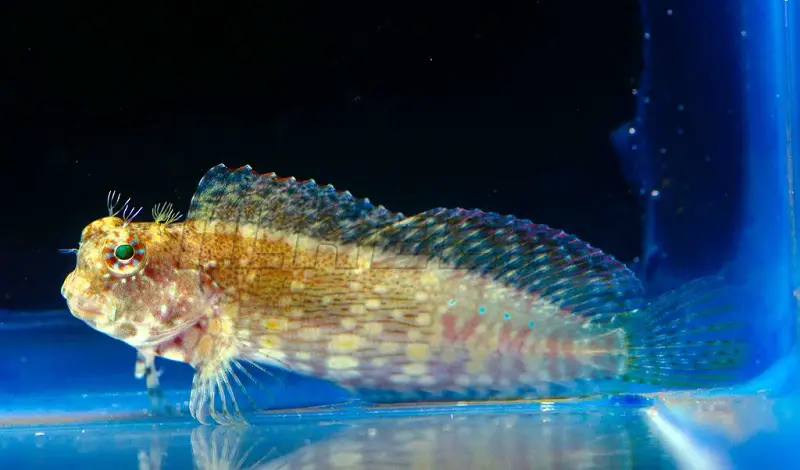
There aren’t many reasons that would prevent you from getting a Lawnmower Blenny.
The main restriction is compatibility. While these fish are largely friendly and social, there are certain tank mates that bring out their aggressive side, primarily their own species or similar-looking fish.
They nibble corals too, so they’re not suitable for your reef tank.
If there are no compatibility problems, then this species could be a great addition to an established setup, provided their preferred conditions are met, including tank size.
Lawnmower Blennies are curious and interesting fish that show their personality just by looking at you. This attractive species will quickly become one of your favorites.
What tank mates do you have with your Lawnmower Blennies? Let us know about your setup in the comments below…

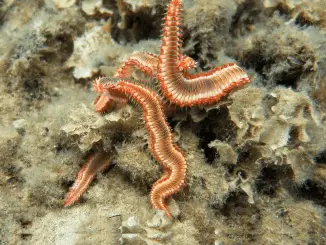
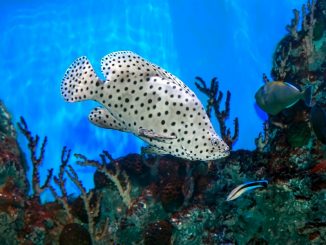
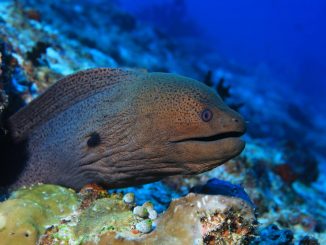
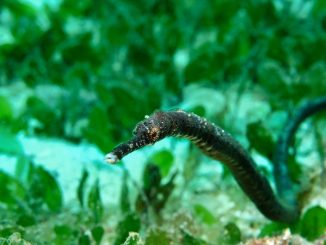
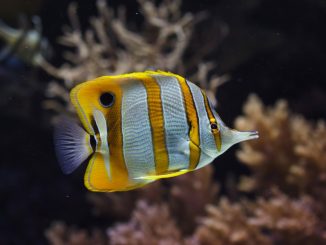
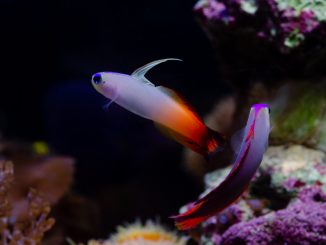
Be careful you don’t buy a similar looking species of blennies that is collected in the Caribbean, usually around Florida. I purchased one a few years ago, and it chased every other fish out of the tank. I had about it dozen neon gobies, some other blennies, and an assortment of other Caribbean fish.